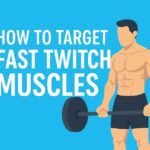How Much Cardio for Bodybuilding: A Complete, No-Nonsense Guide for Muscle, Leanness, and Longevity
If you lift with intention, you’ve probably asked yourself how much cardio for bodybuilding is actually right. Too much and you risk flat workouts, nagging soreness, and a decline in strength. Too little and you breathe like a steam engine between sets, gain fat faster than muscle in a bulk, and stall during a cut. The sweet spot isn’t a single number—it’s a framework that flexes with your goals, recovery, and training phase. This guide blends evidence, pro-level practice (yes, including Dorian Yates’ playbook), and practical templates so you can program cardio that protects your gains and upgrades your health.
Why Bodybuilders Need Cardio (Even in a Bulk)
Cardio is not the enemy of muscle. Used well, it becomes an amplifier.
Heart and Lung Health
A stronger heart pumps more blood per beat, improving oxygen and nutrient delivery to working muscles. That’s better pumps, better recovery between sets, and more work done per session.
Metabolic Support
Steady, sensible cardio improves insulin sensitivity and the efficiency with which you process carbs and protein. That means less bloat during bulks and steadier energy across long sessions.
Endurance for Hypertrophy Sessions
High-quality hypertrophy training uses sub-maximal loads with incomplete rests. A better aerobic base lets you keep the weights honest even in sets 4, 5, and 6.
Body-Fat Management
Cardio creates extra caloric “headroom.” In bulk, it helps you eat enough to grow without adding unnecessary fat. In a cut, it’s a precise tool to increase expenditure without slashing food into the ground.

The Dorian Yates Perspective (What the 6-Time Mr. O Actually Did)
Dorian Yates didn’t treat cardio as optional. Off-season, he favored power walking—about 30 minutes, four times per week—because it was joint-friendly, repeatable, and didn’t beat up his legs. During contest prep, he scaled to two 30-minute sessions a day, six days a week: a brisk morning walk and a controlled evening ride on the bike. He didn’t chase heroics; he chased consistency that didn’t cannibalize his strength work. His recommendation for general health and physique improvement: at least three, preferably four 30-minute sessions weekly, ideally in the morning if possible.
Takeaways for the natural lifter:
- Choose low-impact, repeatable modalities (walking, incline treadmill, easy cycling).
- Keep a baseline dose year-round; scale up in a cut.
- Stay consistent; save the “epic” sessions for the rare days they’re truly needed.
Evidence-Based Starting Points (and How to Personalize Them)
For general health, major guidelines land at 150 minutes of moderate cardio per week or 75 minutes of vigorous. That’s a floor, not a bodybuilding prescription. Here’s how to translate it for physique goals:
Bulking (Muscle Gain First)
- Frequency: 2–3 sessions/week
- Duration: 20–30 minutes
- Intensity: Mostly low-intensity steady-state (LISS), you could hold a conversation during
- Purpose: Maintain cardiovascular health and work capacity without erasing your calorie surplus
Cutting (Fat Loss With Muscle Retention)
- Frequency: 4–6 sessions/week
- Duration: 30–45 minutes LISS, or 10–20 minutes of intervals
- Intensity: A blend—LISS as a base, short lactate sprints sparingly to keep conditioning high
- Purpose: Create deficit, manage appetite, maintain training quality
Maintenance / Recomp (Performance + Leanness)
- Frequency: 3–4 sessions/week
- Duration: 25–35 minutes
- Intensity: Mostly LISS with the occasional “punchy” day (a tight interval block or tempo effort)
This is also a perfect place to restate the core question—how much cardio for bodybuilding—because the real answer is as much as improves performance and composition without impairing recovery.
“Too Much” Cardio: The Warning Dashboard
Overdoing it creeps up slowly. Watch these early signals and adjust before you spill over.
- Resting Heart Rate Up 10%+ – From your personal baseline upon waking for 3–5 days in a row.
- Performance Drift – Same weight/reps feel harder; sprint pace or wattage drops despite effort
- Persistent Soreness – (especially in the calves, quads, hip flexors) lasting >72 hours
- Minor Aches That Don’t Heal – (patellar tendon, plantar fascia, low back tightness)
- Sleep Disruption – wired at night, groggy on waking
- Getting Sick More Often or lingering sniffles
- Libido Dip and general “flat” mood
- Hunger Swings and carb cravings that don’t match your plan’s calories
One or two blips happen. A cluster means scale back volume or intensity, insert a few no-impact days, and push sleep/nutrition.
The Best and Worst Cardio for Natural Bodybuilders
Best (Muscle-Friendly)
1) Walking and Other True LISS
Brisk walking, easy cycling, rowing at a conversational pace. Minimal cortisol, minimal joint load, maximal repeatability. Great daily.
2) Lactate Sprints With Long Rests
30–60 seconds hard, 2–3 minutes easy. Do 4–8 total sprints. The lactic burst challenges conditioning without turning the session into a cortisol bath. This is the “go hard, then recover fully” way that preserves power output and keeps legs fresher for squats.
3) Incline Treadmill or Power Walking Outdoors
Yates’ bread and butter. Elevation nudges heart rate up without pounding your joints.
Use With Caution (Context-Dependent)
Moderate-Intensity Steady-State (MISS) Like Jogging
Solid calorie burn, but can accumulate leg fatigue if you’re squatting heavy. Keep sessions modest, and don’t stack them right before leg day.
Worst (if You Care About Gains and Recovery)
1) Fasted High-Intensity Intervals
Fasted + maximal effort = two big cortisol triggers. Save all-out sprints for a fed state.
2) Long High-Intensity Sessions (20–30 Min of Hard Intervals)
High intensity is a spice, not a staple. Keep the “hard part” tight.
3) Long, Fasted Moderate Cardio (45–90 Min)
A big energy drain while unfed can push muscle breakdown.
4) Intense Cardio Immediately After Lifting
Heavy endurance work post-weights ramps AMPK and may blunt the mTOR signal you just earned. If you must pair them, do light cardio after lifts or split the day.
Re-emphasizing the core decision: when you ask yourself how much cardio for bodybuilding, consider not merely minutes but type and timing. Ten minutes of the wrong thing can cost more than thirty minutes of the right thing.
Timing and Session Design That Protects Your Lifting
- Gold Standard: Separate days for lifting and hard cardio.
- Silver: AM/PM split—cardio in the morning, lifting later (or vice versa).
- Bronze: Lift first, then light cardio only.
Fasted?
- Safe for walking and other true LISS.
- Avoid for sprints and taxing intervals; take in at least a small carb/protein feeding beforehand.
Micro-structure for Sprints (Lactate Emphasis)
- Warm-up: 6–8 minutes easy + dynamic mobility
- Main work: 6 × 40 seconds hard / 2:20 easy (bike, rower, sled, hill)
- Cooldown: 5–8 minutes easy
- Frequency: 1–2 times per week in a cut; 0–1 in a bulk
Joint-Friendly Choices (so You Can Repeat Them for Months)
- Walking/Incline Walking: Unlimited repeatability; great on step-up weeks
- Stationary Bike: Quad blood flow without impact; track wattage for objective progress
- Rowing Ergometer: Full-body, posterior-chain friendly if technique is crisp
- Elliptical: Low load with controllable cadence; easy to keep in LISS range
- Swimming: Outstanding for de-loading joints; keep it technical to avoid shoulder irritation
If your knees complain, move to the bike/elliptical. If your lower back tightens, swap rowing for walking. There’s always a friendly option.
Body Type and Individualization
- Ectomorphs (Naturally Lean): Keep cardio minimal in bulks: lots of walking, rare sprints. Deficit should come from diet in a cut, with modest LISS added.
- Mesomorphs (Naturally Muscular): Mix of LISS plus the occasional sprint block. Adjust quickly if leg performance dips.
- Endomorphs (Gain Fat Easily): You’ll likely benefit from more total LISS, but still avoid daily leg-draining intervals. Use steps and incline walking as your base.
Age, training age, injury history, and weekly life stress (sleep, job, commute) all push your personal dial up or down.
Fueling, Hormones, and Recovery (the Boring Stuff That Wins)
- Protein: 1.6–2.2 g/kg daily to protect muscle.
- Carbohydrates: Keep moderate-to-high on hard training days; they tame cortisol and restore glycogen.
- Fats: Don’t crash them. Adequate fats support hormones and satiety.
- Hydration + Sodium: Cardio increases fluid loss; dehydration wrecks performance faster than you think.
- Sleep: 7–9 hours—your cortisol control knob and growth-hormone booster.
- Active Recovery: Easy walking or cycling on “off” days keeps tissues perfused and speeds repair.
Periodization: Build Your Cardio Like You Build Your Training
Just as you periodize training volume and intensity, periodize cardio across the year.
Off-Season (Hypertrophy Focus)
- 2–3 days/week LISS, 20–30 minutes
- Optional: 1 short sprint session every 1–2 weeks to keep a gear in reserve
Pre-contest (8–16 Weeks Out)
- Start +1 LISS session per week, then add minutes or a second daily LISS for stubborn plates
- Insert sprints once weekly to keep conditioning high and appetite in check
- Pull back lower-body lifting volume if legs are perpetually flat
Deload Weeks
- Cut cardio volume by 30–50% and remove sprints
- Keep walking for recovery and rhythm
Tracking That Actually Helps (Without Turning You Into a Cyborg)
- Resting Heart Rate (RHR): Check on waking; a 10% jump sustained over several days = back off.
- Performance Anchors: bar speed, top sets, sprint wattage/pace. If they sag, adjust cardio first.
- Weekly Cardio Budget: e.g., bulking 60–90 minutes; cutting 150–300 minutes. Spend it on LISS first.
- Body Comp Markers: photos, measurements, strength trends—not just scale weight.
Real-World Templates You Can Use Tomorrow
Bulking (12-Week Hypertrophy Block, Lower Cardio Emphasis)
- Mon: Upper Hypertrophy
- Tue: 25–30 min incline walk (LISS)
- Wed: Lower Strength
- Thu: Off or 20 min easy bike flush
- Fri: Push/Pull Hypertrophy
- Sat: 25 min outdoor walk (LISS)
- Sun: Off
Notes: If appetite is poor, move LISS away from meals; if fat gain creeps up, add one 10-minute brisk walk after lunch and dinner (NEAT wins).
Cutting (10–12 Weeks, Gradual Build)
- Mon: Lower Hypertrophy + 15 min easy bike cool-down
- Tue: 30–40 min LISS
- Wed: Upper Strength
- Thu: Sprints—6 × 40 sec hard / 2:20 easy (bike/row)
- Fri: Full-body Hypertrophy + 10–15 min LISS
- Sat: 35–45 min brisk walk LISS
- Sun: 30–40 min LISS or mobility
Progression Options: Add 5 minutes to two LISS days, or add one extra sprint rep weekly up to 8; then deload sprints for a week.
Recomp / Maintenance (Performance + Leanness)
- Mon: Upper Hypertrophy + 10 min LISS
- Tue: 30 min LISS
- Wed: Lower Strength
- Thu: Off or 20–25 min LISS
- Fri: Push/Pull Hypertrophy
- Sat: Sprints—4–6 × 30–45 sec with long rests
- Sun: Off
Quick Fixes to 5 Common Problems
1) Legs Always Feel Heavy for Squats
Pull intervals to 1×/week (or zero), move them after your heaviest lower day, and make the rest LISS on non-leg days.
2) Stalled Fat Loss Despite “A Lot” of Cardio
Audit intensity (are your LISS sessions drifting into MISS?). Tighten food tracking. Add steps before you add more sprints.
3) Appetite Cratered During a Bulk
Shorten LISS, shift it away from meals, remove intervals, and add post-meal 10-minute strolls instead.
4) Sleep Went South When Cardio Increased
Move hard sessions earlier in the day, add a small post-workout carb, and reduce total weekly intervals for 10–14 days.
5) Recurring Shin or Knee Pain
Swap jogging for bike/elliptical/row. Keep incline walking, but shorten your stride and watch volume. Add soft-tissue/calf mobility.
Putting It All Together (the Year-Round Playbook)
- Keep a baseline of LISS year-round (think Yates: 3–4 × 30 minutes).
- Scale the dose in cutting blocks; increase time/frequency before you increase intensity.
- Use lactate sprints with long rests as your precision tool, not your daily bread.
- Protect leg training: position hard cardio away from heavy lower sessions.
- Track RHR, performance, and soreness to steer your weekly budget.
- Choose joint-friendly modalities so you can be consistent for months, not days.
Conclusion: Your Personal Formula for Cardio That Builds, Not Breaks
There isn’t a single number that answers how much cardio for bodybuilding for every athlete, every phase, every week. But there is a durable formula: start with low-impact LISS a few times per week, scale volume to match your phase (minimal in a bulk, strategic in a cut), and sprinkle in brief, well-recovered sprints when they improve conditioning without taxing your legs. Anchor everything to performance, recovery, and how you look and feel. If your lifts climb, your sleep is steady, and your photos keep improving, you’ve nailed the balance.
In the end, the right answer to how much cardio for bodybuilding is the smallest effective dose that makes you healthier, leaner, and stronger—consistently.
Frequently Asked (Real) Questions
Q1) Can I Do Cardio After Lifting?
Yes—light cardio (10–20 minutes LISS) is fine. Save hard intervals for a separate day or at least a separate session.
Q2) Is Morning-Fasted Walking, Okay?
Absolutely. It’s a low-stress way to accumulate LISS. Reserve high-intensity work for a fed state.
Q3) Do Steps Count As Cardio?
They count as energy expenditure and recovery. Don’t underestimate 8–12k quality steps daily—especially in a cut.
Q4) How Do I Know if I’m Doing Enough?
Your litmus tests: stable or improving strength, a calm resting heart rate, clear sleep, and body comp moving in the intended direction.
And because readers ask it exactly this way: how much cardio for bodybuilding if I’m natural and squatting heavy twice a week? Start with 2–3 × 25–30 minutes of LISS, add 1 short sprint session only if your performance stays solid, and adjust week to week based on the dashboards above.






